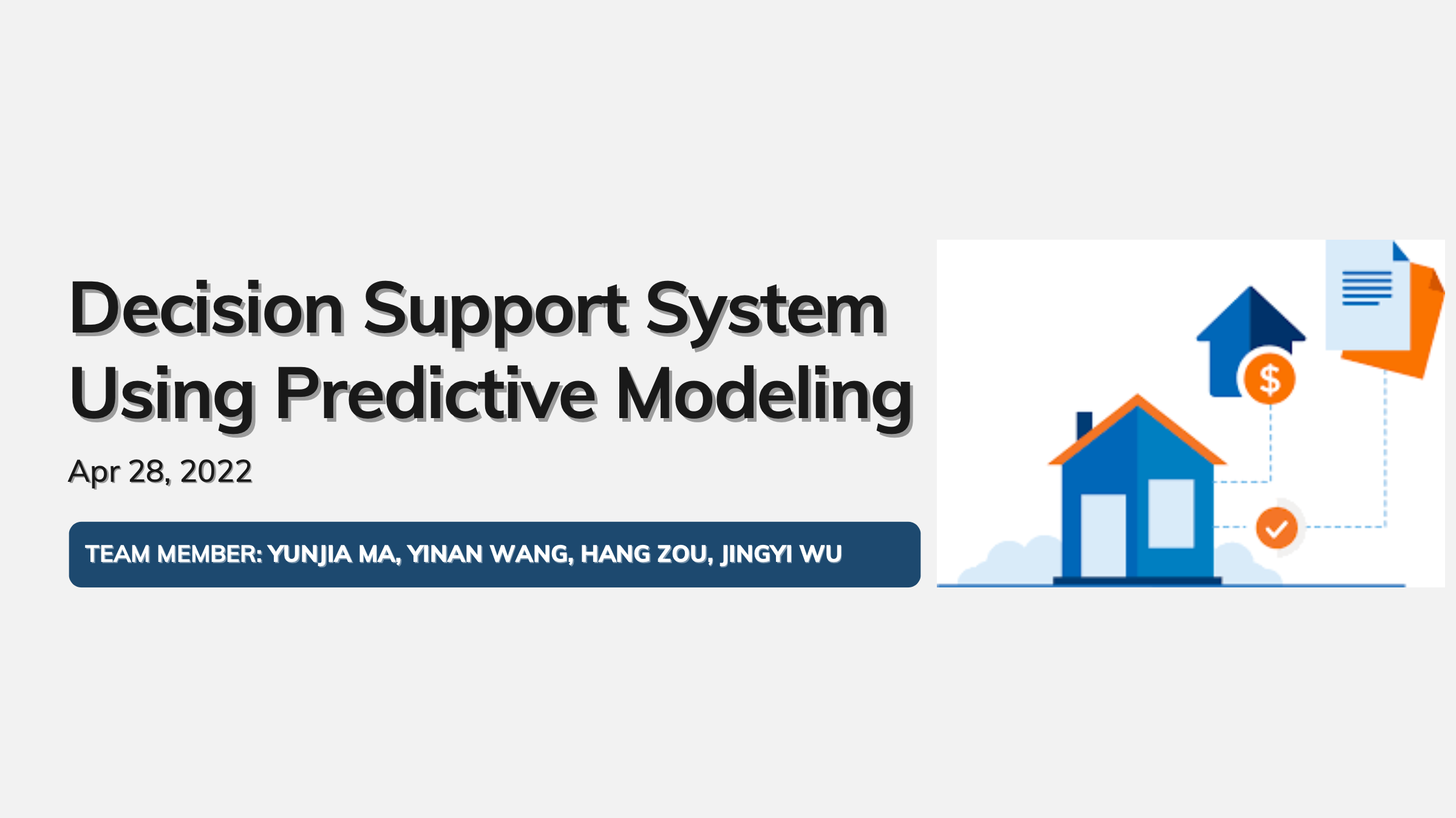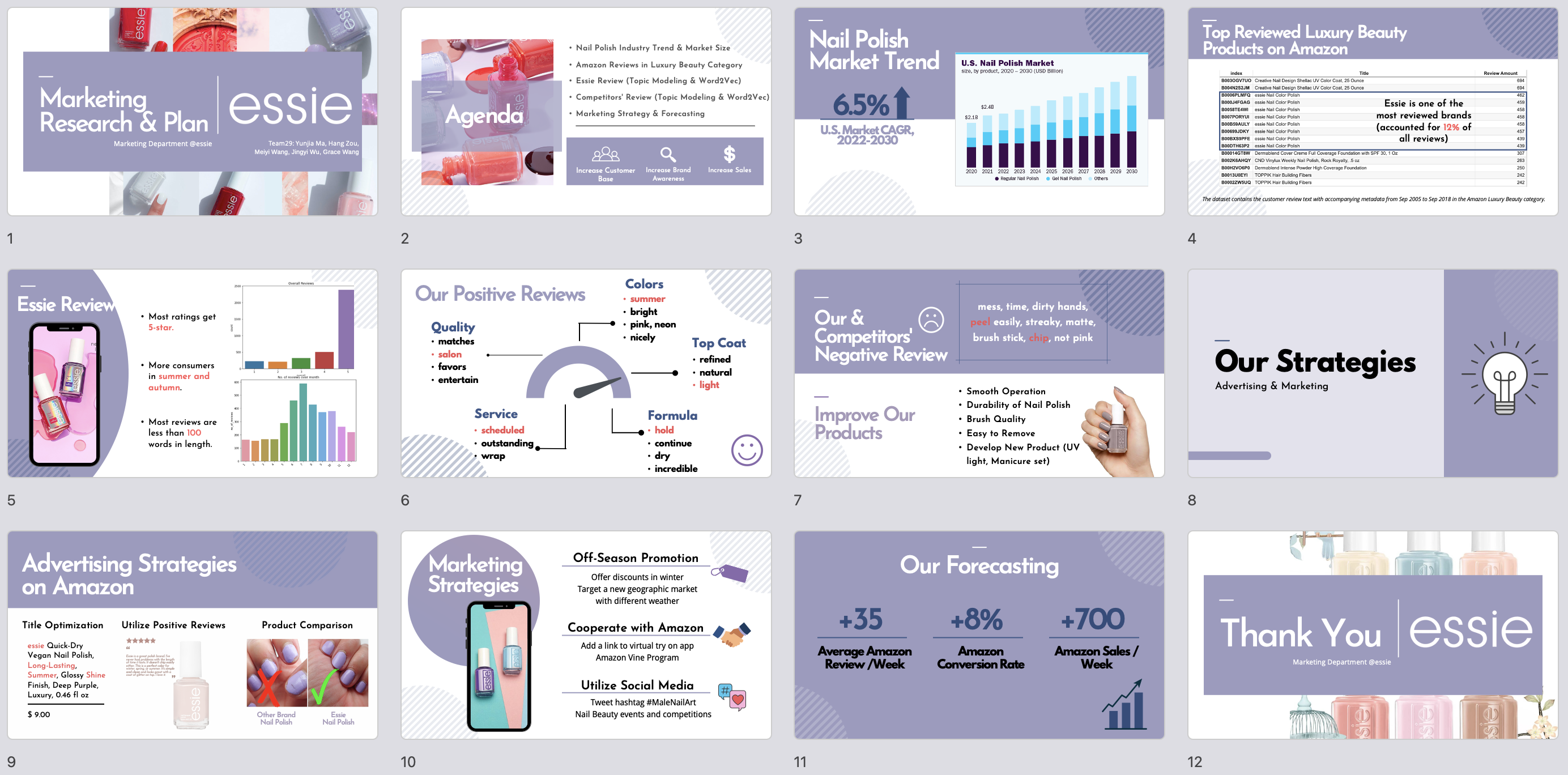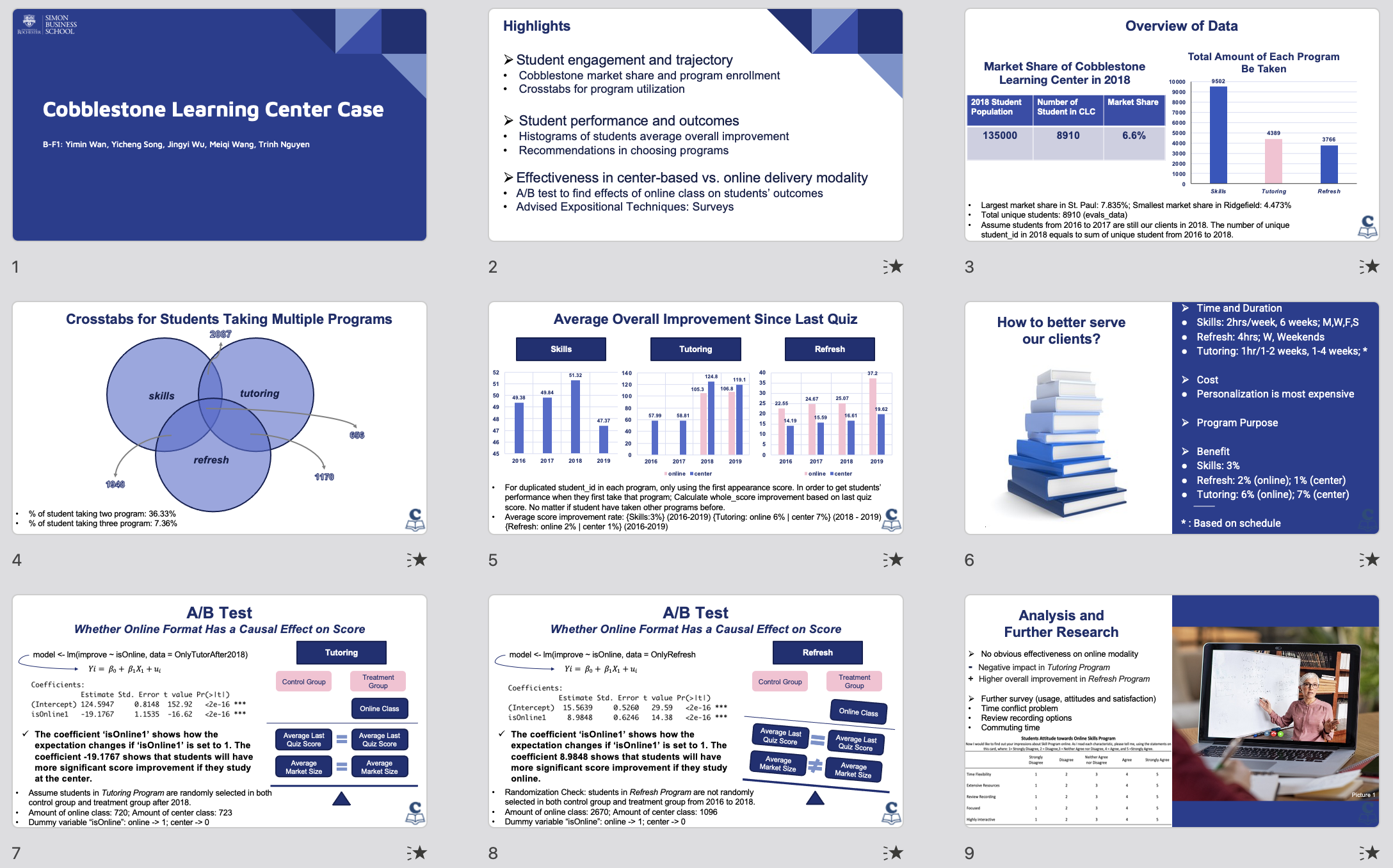Things I Can Do
Technology: Data Visualization, Regression Models, Web Scraping, Linear Programming, Machine Learning, Cluster Analysis, Conjoint Analysis, Pricing Analysis, Constrained Optimization, Simulation Model
Programming Language: MySQL, Python (Pandas, NumPy, Scikit-Learn), R, Spark SQL
Platform: Power BI, Tableau, GitHub, Databricks, Google Analytics
Recent Projects

Utilized the dataset of HELOC applications to predict whether they will pay back their HELOC account. Our vision is to develop a predictive model to access credit risk and combine this with an interactive interface that bank/credit card company’s sales representatives can decide whether to accept or reject an application. Our interactive interface can be found here

Through the analysis of the collected customer reviews on Amazon focusing on Essie’s nail products reviews and its competitors’ products’ reviews, this report aims to increase consumer size, strengthen brand awareness, and stimulate sales units. The methodology of topic modeling and Word2Vec are used to address the specific aspects that Essie needs to pay more attention to and improve for its future development.

Designed market simulation model for toy horse using cluster analysis and conjoint analysis. Executed regression models to collect and predict 200 individuals' part-utilities of 16 possible toy horse profiles. Built K-means cluster analysis to aggregate customers by similarity. Analyzed the optimal profile and competitor’s strategies and improved market share by 33% in the short and long term.

Mathematical Programming is a field of management science that finds the optimal, or most efficient, way of using limited resources to achieve the objectives of an individual of a business. There are many applications such as determining product mix, manufacturing, routing and logistics, and financial planning. This project includes linear programming problems and samples used in class. (Picture from: Real Python)

The data tracks the number of prescriptions each doctor wrote for the drug in a given month, the number of detailed visits they received, and other characteristics. The company is interested in targeting their detailed visits more effectively by identifying which doctors are most likely to increase their prescriptions. (Picture from: Pharmaceutical Technology)

Hacker News is a site where user-submitted stories (known as "posts") receive votes and comments, similar to reddit. There are two types of posts in Hacker New: 'Ask HN' and 'Show HN'. This analysis will compare these two posts to determine the followings: 1. Do Ask HN or Show HN receive more comments on average? 2. Do posts created at a certain time receive more comments on average? (Picture from: MongoDB)

RFM analysis is a way to use data based on existing customer behavior to predict how a new customer is likely to act in the future. This course project built an RFM model by three key factors: 1. how recently a customer has transacted with a brand 2. how frequently they’ve engaged with a brand 3. how much money they’ve spent on a brand’s products and services. (Picture from: CleverTap)

In many business models, the value for one or more cells representing independent variables is unknown or uncertain. Simulation can be used to properly assess the risk inherent in these types of model. This project includes simulation model problems and samples used in class.

Product Analysis for Cobblestone Learning Center
Managed a project analyzing test scores of 9k CLC students in different study programs. Used visualization tools to generate curriculum utilization and student performances in different districts; Provided recommendations in course selection to increase students' satisfaction. Conducted A/B test on program effectiveness in virtual and in-person modalities; Helped CLC provide better curricula for students.

Get In Touch
-
Address
606 W 57TH St.
New York, 10019
United States
-
Phone
650-797-7160
-
Email
jyiwu0517@gmail.com










